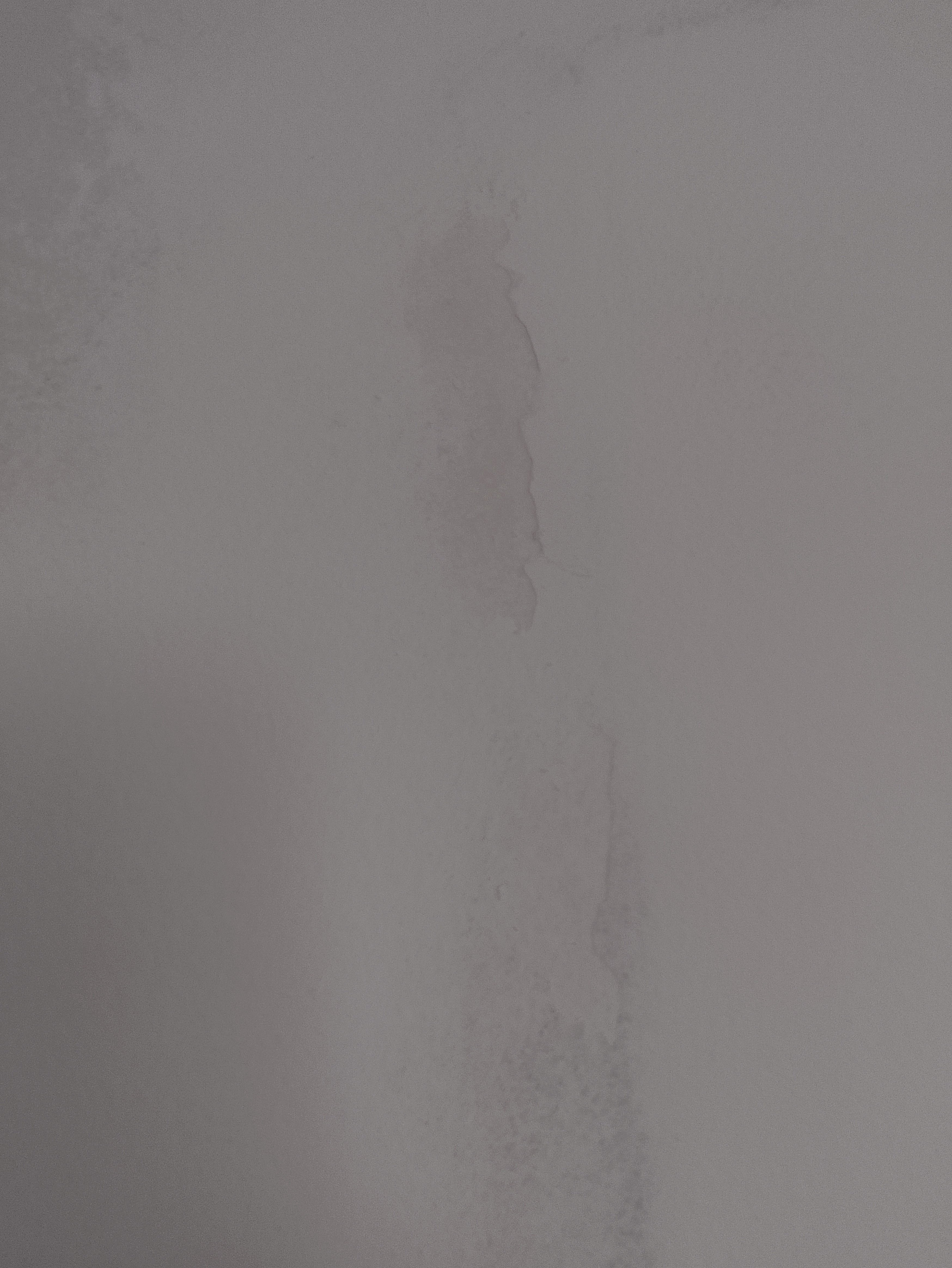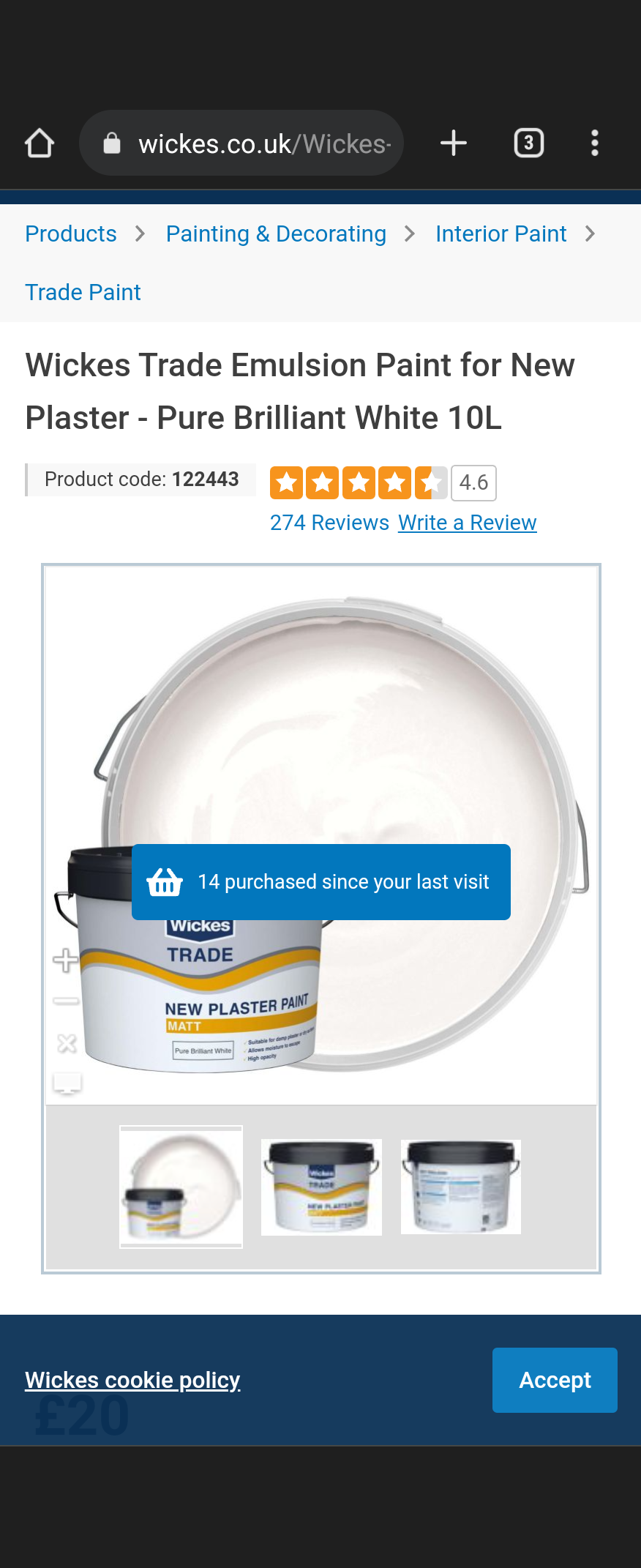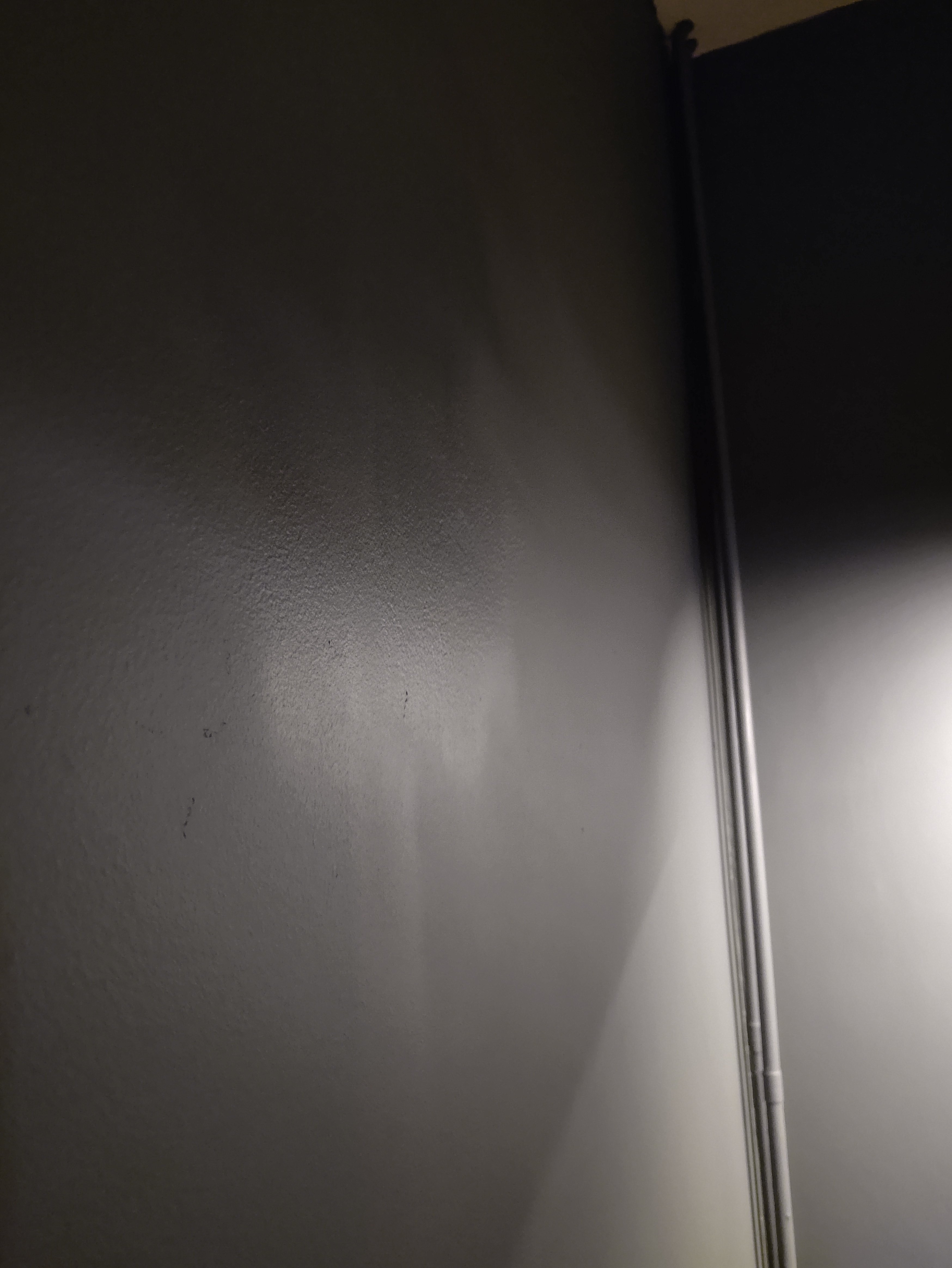We’d like to remind Forumites to please avoid political debate on the Forum.
This is to keep it a safe and useful space for MoneySaving discussions. Threads that are – or become – political in nature may be removed in line with the Forum’s rules. Thank you for your understanding.
📨 Have you signed up to the Forum's new Email Digest yet? Get a selection of trending threads sent straight to your inbox daily, weekly or monthly!
Plaster peeling on second coat after first mist coat taken
Wes121708
Posts: 172 Forumite




We had an internal window filled a couple of weeks back. The plaster is dry but where the plaster joins the original part of the wall it's still dark. How can that be as it's got hardly any plaster on it.

I did one side of the wall yesterday. Did the first mist 40/60 ratio and it took fine. Went to go for second coat of new plaster paint and all was fine apart from one part which came off. I stopped and waiting for it to dry and then thought I'd sand it to make it less noticeable and key it before trying again.

How's the best way to approach this when I go to do the other side of the wall? Any tips please.

I did one side of the wall yesterday. Did the first mist 40/60 ratio and it took fine. Went to go for second coat of new plaster paint and all was fine apart from one part which came off. I stopped and waiting for it to dry and then thought I'd sand it to make it less noticeable and key it before trying again.

How's the best way to approach this when I go to do the other side of the wall? Any tips please.
0
Comments
-
You sometimes get this if the plaster has been over polished. Did it look shiny before you painted it? If you're sure it's fully dried out, I'd give the plaster a bit of a rub down and mist coat it again.
What paint are you using for your mist coat? Some people say to use the cheapest emulstion you can find which isn't always a great idea. I use the same paint as I'll be using for the top coat but watered down by 30-40%.
Also, specific new plaster paint is only a temporary covering ideally. It's used in new builds etc where the plaster isn't fully dry but they need a quick finish. It allows the plaster to breath with the idea that the home owner will redecorate anyway once they move in.0 -
The bit round the edge may be dark because the original plaster has been coated with PVA or similar to help the new skim bond to it where it's feathered in. It won't be that the new plaster is still wet - as you say, it's very thin there.
Re. the paint, I've used a mist coat of "contract matt" in the past but have seem advice more recently that this isn't recommended as a base coat. A top coat of a vinyl matt may not bond to it well. In future I'd probably use a mist coat of the same top coat paint, watered down somewhat.0 -
Thanks @rob7475 and @casper_gutman
I've used this paint watered down 40% as it said. Let dry and applied a further coat without it being watered down.
I then plan on going over the same colour as the rest of the room which is a valspar colour match and the other side with a lick paint.
Just worried that when I come to doing the top coat it will peel all around the edges!
I'll try and rub it down a bit and then do a mist coat again. Thanks 0
0 -
Does the instructions for that paint recommend you dilute?
Personally I would've gone for a contract matt, such as Armistead Trade - https://www.duluxdecoratorcentre.co.uk/products/paint/armstead-trade-contract-matt1 -
I think the Wickes "new plaster paint" is basically a contract matt with a label they hope will be more descriptive!neilmcl said:Does the instructions for that paint recommend you dilute?
Personally I would've gone for a contract matt, such as Armistead Trade - https://www.duluxdecoratorcentre.co.uk/products/paint/armstead-trade-contract-matt0 -
neilmcl said:Does the instructions for that paint recommend you dilute?
Personally I would've gone for a contract matt, such as Armistead Trade - https://www.duluxdecoratorcentre.co.uk/products/paint/armstead-trade-contract-mattneilmcl said:Does the instructions for that paint recommend you dilute?
Personally I would've gone for a contract matt, such as Armistead Trade - https://www.duluxdecoratorcentre.co.uk/products/paint/armstead-trade-contract-matt
Yes it tells you to dilute first coat by 40% which was fine it was just when I came to recoat and it advised you didn't have to dilute that the plaster came off.0 -
So I scrapped off the flaky paint, sanded the edges and but zinsser no peel to stop anymore round the edges. Even with sanding the edges were raised so I filled it sanded and put the Matt paint on top and this happened!

It's shiny! But the the shiny patch is way bigger than the part filled and sanded!
Any ideas of how to resolve it?
I've got the other side to do yet and the chimney breast and can't bare this happening again!0 -
And I know the pipes are shocking but that's a job for next year!Wes121708 said:So I scrapped off the flaky paint, sanded the edges and but zinsser no peel to stop anymore round the edges. Even with sanding the edges were raised so I filled it sanded and put the Matt paint on top and this happened!
It's shiny! But the the shiny patch is way bigger than the part filled and sanded!
Any ideas of how to resolve it?
I've got the other side to do yet and the chimney breast and can't bare this happening again!0 -
Three reasons I can think of why the initial coat didn't adhere to the fresh plaster and could then come off with subsequent coats.1) The plaster wasn't fully dry, so effectively the initial coat hadn't fully dried either by the time the second coat was applied.2) The plaster was 'polished' too much as explained above.3) The first coat wasn't a 'mist' coat, so didn't have enough water content to penetrate the surface of the plaster and make a bond.Oh, and as also mentioned before, a surface layer of PVA could also cause this issue as it 'reactivates' with the paint and lifts off.For (1), it certainly looks dry enough in that first pic. Did you wipe your hand across the first applied coat and confirm it was dry before applying the second? It doesn't seem to be this issue.For (2), the best solution is to key the surface using ~120grit paper. It doesn't, tho', look polished in the photos, at least not the main part - the darker pink vertical band surrounding this could possibly be slightly polished, tho', but hard to imagine it was done to that extent.For (3), you have described what is a 'mist' coat, so can only assume this was done properly.For the PVA possibility, it's more likely the whole PVA coat would peel off when reactivated, so that, in itself, should largely cure the issue. Bits might remain, but not whole large sections like the shiny bit you've shown.So, really confusing.A couple more possibilities - the 'fresh plaster' photo shows that almost white finish which is caused by a layer of actual plaster 'scum' - not the right word, but I mean by this a layer of plaster on top which has been left there after the plaster has set, and is a coat that is not adhered to the rest, but was just left behind from the finishing process - it's a 'scum' layer that's just dried on top. This is not stuck the rest, and will come off with a damp cloth. If this hadn't been removed, then you may have painted on to a loose powdery top scum layer, so it's this that's coming off with subsequent paint - it's just detaching.That shiny patch - that's weird. Shiny?! Is it 'wet' to the touch? Does paint show on your fingers? The most likely cause of it appearing 'shiny' is because it's still damp - is this the case?! If it is, then it's likely because that room has no heating or ventilation (does it?), or because water is coming through the built-up window joint - could it be? Or, perhaps, if that patched section of wall has not been insulated properly, it's so cold that any moisture condenses on it and keeps it wet.Process of elimination of the above.Other than that, I'm stumped. What I would want to do, tho', is to get back to the plaster skim surface, and key that up after ensuring it's bone dry. Zinsser 'no pee'' just shouldn't be needed in a situation like this; a fresh new plaster skim should be perfect for taking new paint.Another possible possibility, sometimes novices to painting will 'over-do' the application, and will over-roller the second coat of emulsion. Ie, they'll be too critical of the finish/amount of paint/too much/too little, and will keep going back over it when they should have left it well alone... By then, the mist coat underneath will have 'reactivated' and softened (it was just a very thin coat after all) and will lose its adherence to the plaster (especially if it wasn't keyed first), and detach itself in patches. I won't tell you how I know this...
0 -
@Bendy_House panic over. The paint has fully dried and now not shiny, thank goodness!
I think I was a bit over zealous when it came to doing the second mist and that's what's caused the problem with the peeling.
On the other side I was thinking of doing two mists ratio 40/60 I'm just so worried that the pva used to seal the plaster(excuse me if not correct) to the original wall will peel again. Shall I use a primer like zinsser bullseye after the mist before I coat with my Matt paint?1
Confirm your email address to Create Threads and Reply

Categories
- All Categories
- 352.2K Banking & Borrowing
- 253.6K Reduce Debt & Boost Income
- 454.3K Spending & Discounts
- 245.3K Work, Benefits & Business
- 601K Mortgages, Homes & Bills
- 177.5K Life & Family
- 259.1K Travel & Transport
- 1.5M Hobbies & Leisure
- 16K Discuss & Feedback
- 37.7K Read-Only Boards




